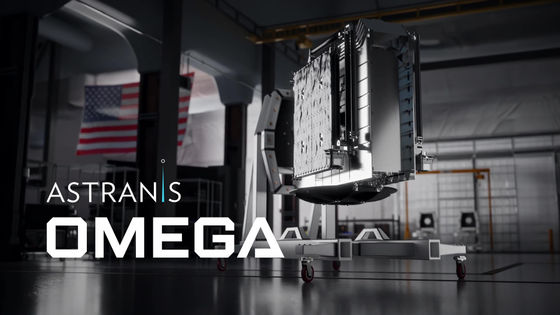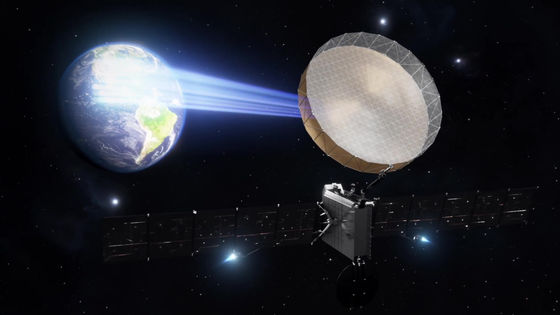Starlink rival Astranis announces 'Astranis Omega' satellite that will enable explosive 50Gbps next-generation internet communications

On April 10, 2024, Astranis, a US satellite communications company, announced plans to launch 'Astranis Omega' in 2026, which will provide affordable satellite broadband with a throughput of over 50 Gbps.
Introducing: Astranis Omega
Small Astranis GEO broadband satellites are getting bigger - SpaceNews
https://spacenews.com/small-astranis-geo-broadband-satellites-are-getting-bigger/
Astranis unveils Omega 'MicroGEO' satellites for beaming dedicated broadband down from high orbit | TechCrunch
https://techcrunch.com/2024/04/10/astranis-unveils-omega-microgeo-satellites-for-beaming-dedicated-broadband-down-from-high-orbit/
Astranis, based in San Francisco, California, provides satellite communications services to the United States, Mexico, Argentina, the Philippines, Thailand and other countries using its MicroGEO satellites, a small geostationary orbit (GEO) satellite system.
Astranis co-founder and CEO John Gedmark announced the Astranis Omega satellite, which will boost data rates from around 10Gbps to 50Gbps using a 600kg satellite, slightly larger than the dishwasher-sized MicroGEO, which weighs around 400kg.
Current satellites are operated using a hybrid of chemical propulsion, which burns fuel and oxidizer, and electric propulsion, which uses electrical energy to eject propellant. Omega will be powered exclusively by electric propulsion, which will extend its design life to nearly 10 years and improve maneuverability in orbit.

According to SpaceNews, a news site specializing in aerospace industry reports, conventional broadband satellites are typically about the size of a school bus and weigh several thousand kilograms. For example, Viasat, which provides high-speed satellite broadband services, has a small satellite constellation with a throughput of 1000Gbps, but the satellites are huge and weigh up to 6000kg.
On the other hand, Astranis' satellites, including MicroGEO, are small, which reduces launch and operational costs. In addition, TechCrunch, an IT news site, pointed out that small satellites have the advantage of being difficult to locate and track, making them less vulnerable to attack, so 'it's clear that Astranis is looking at dual-use technology for civilian and military purposes.'

The ability to tailor satellites to suit individual customers also differentiates Astranis: While some countries have their own communications satellites, for example, the costs are covered by huge defense budgets and such capital is hard for private companies to come by.
In response, Astranis offers a 'satellite as a service' offering, allocating a satellite, fully or partially, to a single customer for an up-front or monthly fee.
Gedmark declined to name the companies interested in Omega, but suggested that one target would be 'energy, oil and gas companies' that have holdings across large geographies and require large amounts of secure satellite data.
Gedmark also pointed out that the Biden administration's 2025 budget request includes a program called 'Protected Tactical SATCOM-Global (PTS-G)' that will invest $558 million over two years to expand the geostationary communications constellation of small Ka-band and X-band satellites. 'We are developing two versions of the satellite: a dual-use satellite that uses Ka-band for commercial and military use, and an X-band satellite exclusively for military use,' he said.

Astranis plans to complete the first Omega satellite in 2025, followed by six more in orbit in 2026. After that, the company plans to launch up to 24 satellites per year, depending on the pace of production.
Related Posts:
in Hardware, Posted by log1l_ks







